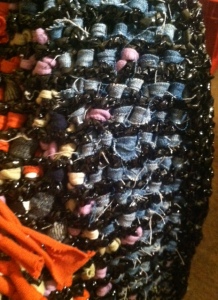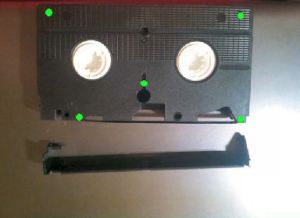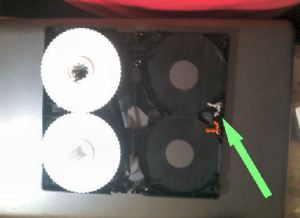It can be a little time consuming, but it’s great busy work for cold winter nights. It’s also a super cheap way to cover wood floors. By making your own rugs, you can tailor the size and shape to exactly what you need.
For the 100% recycled material rag rug, you’ll need: I-size crochet hook, VHS cassette plarn, and tons of scrap fabric cut into 1 inch by 3 inch wide strips
Making the rug base
Step #1. Make a base line of chain stitch crochets the width of the rug you’re making. Make sure that the chain is an even number.
Step #2: Count 4 chain stitches and double crochet into the stitch.
Step #3: Chain stitch once and double crochet the entire base chain.
Step #4: Chain stitch 3, skip one, double crochet into double crochet from previous row.
Step #5: Continue until you have the size of rug base you want.
Tying the Rug
Step #1: Start at one corner, tie a fabric scrap onto each border side using a simple knot.
Step #2: Onto each segment, tie another fabric scrap along that border.
Step #3: Work your way up the rug base. Be sure you tie a scrap onto each segment of the edge.
Step #4: Once you’ve covered the rug base, you stop there. Or you can paint the back with no skid-paint.







